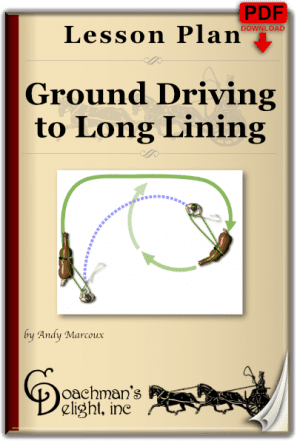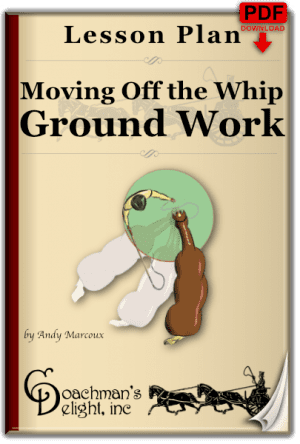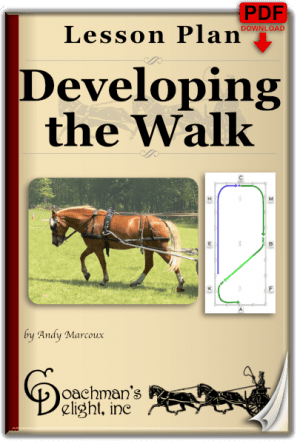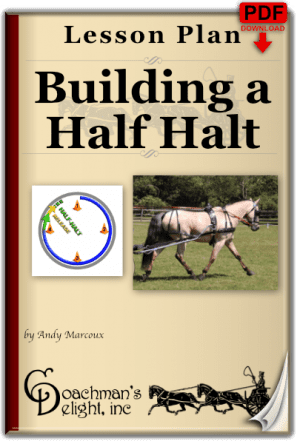We had a great live question and answer discussion!
Things may have started out a little sticky. It turns out everyone in the world is doing this sort of thing at the same time, and that makes computers a little uncooperative. So, some of the visual aids I had lined up didn’t work out. Such is life!
I’ve done a little bit of light editing, but really, mostly left the video as it happened during the live recording (I can only spend so many hours editing at a time!) Bear with me in the sticky spots!
Also, there are chapter marks in the video, so you can surf right to the questions that are most interesting to you. Cool, huh?
Finally, don’t forget to scroll down to the related links below the video. There are links to the mentioned classes, lesson plans, and long lines we discussed.
Live Discussion Recording – Monday March 30th 8pm EDT
Lesson Plans That I Talked About
The one lesson plan we returned to frequently in this discussion was Developing the Walk. This is a fantastic lesson plan for developing horse’s rhythm, flexibility, and patience. It’s one of my favorite lesson plans!
I mentioned several classes and lesson plans. Here’s the list of those links. Bear in mind, some of the lesson plans are included with classes (for example the Half Halt lesson plans come with the Half Halt class.) You can choose to purchase just a lesson plan, or buy the class and you’ll get the associated lesson plans for no extra charge.
Long Lines
We were talking about lighter weight long lines. They can be kind of difficult to find. I used Perri’s long lines for many years, but it seems that they are being made heavier, so I’m no longer as happy with them.
I was fairly impressed with these Equi-Logic Driving Reins (they’re not really driving reins, they’re long lines.) They seem to have a nice balance of weight and body that makes them easy to handle.
For a close runner-up, there’s a set from Intrepid International. They are very light, and soft, but in my opinion, maybe a little too light! They are very pliable, which makes keeping them in your hand a little more difficult than the ones from Equi-Logic.
- Yes, I do get a referral for qualifying purchases on Amazon. Then again, I won’t recommend anything that I haven’t personally used.
Ask More Questions
If you missed out on the meeting, or want to ask a followup question, post your question in the comments section below.
Show Your Support
Of course, if you want to show your support with a few bucks, I’m not going to turn you down!
I’m in the same boat as all the other horse trainers, restaurateurs, and other service people who make their living from recreational spending.
All of our spring clinics and competitions have been cancelled, and there’s really no way to tell when we’ll get back to a regular schedule.
Your purchases here on Coachman’s Delight really mean a lot to me!
Checkout my Shop Page to see what you can learn about today.











I just started laying out my driving goals for 2021 and one was to follow your teachings on line. I’m so happy I started with this Q&A. I now have a list of lessons to download, a better understanding of some of whats ahead for me and my horse and I laughed a bit as well. Thank You for that!
Hey Andy! Mind if I add something to the question about where to put the lines on a 4?
In general, draft horse leaders are in draft through a gentle turn, whereas carriage horses are not. Carriage horses are turned leads first and wheels in the same track. Drafts are swept around a turn.
Agricultural have their lines inside of the wheel horses because they’re mostly long straight lines in a field or logging where the lines may get caught on branches and pull (which you mentioned).
For carriage driving they’re on the outside, they are easier to string (which you also mentioned) but- When you turn your leader horse first, the extra distance that the outside leaders rein has to travel automatically shortens the line to that outside horse. This means, you can turn AND get your leaders out of draft by just using the inside line.
If your leaders are in draft and turn the leaders sharp and the reins are hooked to the inside of the bridle, it is at risk of being pulled off.
Threading the reins on the outside allows the rein to help steady the wheeler and is less likely to pull the bridle off.
You also mentioned having a terret on the pole of the wheel horses. These would be on both wheel horses in the beginning but kept pulling the near wheelers bridle off. They then used a side terret on the near horse and a pole terret on the off horse, as this horse would be directly behind the driver. They were banned in England in the mid 1800s but remained in America. There are photos of horses with these near the turn of the century.
Thanks for the great meeting!
I gifted myself a hackney pony two years ago. Since then I’ve done a few training level cde’s and hacking out. I’d like to start really working towards a goal this year. She loves marathon, is ok with cones, but reverts to show ring hackney in the dressage ring. You know, hollow back, nose high, going like h#ll bent for election. I have been working on relaxation with long walks, but she still triggers going into a ring. Any advice?
I would love a video lesson on how to properly use the whip as an aide. Do you lightly tap the shoulder to the outside to turn in or is it the other way around? I just feel like my whip is for looks and not a useful tool. My mare does not need the whip but I believe using the whip correctly is part of the scoring in ADS. I’m a new driver so I have lots to learn. Thank you for doing this Q&A session!
I’m very new to driving so I’ll just be listening in. Thank you
I would love to know the “ideal” sequence of cues for canter depart. I know how to get my pony to canter, screaming yeehaw and slapping both reins down hard on her back, (just kidding). Ive been practicing the Intermediate dressage test when you ask on a small circle and Im not clear what I should be doing to make it happen nicely.
If the shafts don’t have trace holders do you put the traces thru the hold back straps?
I have two horses that were trained with full collars. I am now trying out breast collar harness and I have experienced reluctance/resistance to their work (individually) with breast collar harness, that was not part of their attitude with full collar harness. (Yes, I have carefully checked fit and that is not a problem.)
I, sometimes, drive a “energy conserving horse”, aka he get’s lazy. I use hands and voice to push him into a working walk. He does not like a whip, so I
use it sparingly. Do you have any advice or tips to push him up into a working walk. Are there ground work exercises that will help?
I am training to be a Navigator , Training level, for CDE in August. I wanted to prepare my time/pace card ahead : i.e. at 1km minimal time, optimal time, maximum time, at 2km etc.
I cannot find the times in the rulebook.
I am wondering if these time are only available at the event, perhaps at the briefing. I am wondering if such time vary with each event and are contingent on the terrain or other factors,
If not, Where do I find the pace times?
PS I like your Stories of a Navigator video. Would like to hear more.
I am trying to get my pony fit and conditioned for a training level marathon for when the CDEs resume. What is the best and safest way to get the pony fit?
I have always used standard shafts and carts to train and drive. We just bought a cart with the shorter shafts for CDE work. My question is, should we train the horse first with the standard shafts to get them used to the shoulder bumping, then switch to CDE shafts or does it matter?
Can you explain how the different type of breast collars (straight, comfy fit, euro collar, full collar,etc)function and how the horses respond to them?